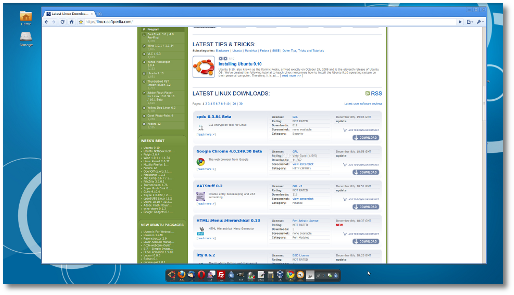 The final development milestone of Firefox 3.6 has been released to web and is currently available for download for users of Windows, Linux and Mac OS X. Earlier this week, Mozilla was considering either January 21st, or January 25th, for the general availability of Firefox 3.6, formerly codenamed Namoroka. The January 21 deadline was decided just a couple of days ago, and today, Mozilla is moving forward with the release of the latest iteration of its open source browser. At this point in time, Firefox 3.6 is in the first stages of the official launch, but make no mistake about it, the final bits for version 3.6 are indeed available for download.
The final development milestone of Firefox 3.6 has been released to web and is currently available for download for users of Windows, Linux and Mac OS X. Earlier this week, Mozilla was considering either January 21st, or January 25th, for the general availability of Firefox 3.6, formerly codenamed Namoroka. The January 21 deadline was decided just a couple of days ago, and today, Mozilla is moving forward with the release of the latest iteration of its open source browser. At this point in time, Firefox 3.6 is in the first stages of the official launch, but make no mistake about it, the final bits for version 3.6 are indeed available for download.Yesterday, when I was telling you that Firefox 3.6 Final is scheduled to drop on January 21st, 2010, I also promised that Softpedia would do its best to get the bits to you before the official release. Currently Mozilla’s webpage for version 3.6 still notes: “Firefox 3.6 is coming soon!” and adds “We still have a few things left to do before it's ready. Here's a short video to show you what's new. If you can't wait, download a release candidate for a sneak peek!” Of course, the official deadline when downloads are scheduled to go live is Thursday, January 21st at 9:30am Pacific Standard Time.
However, Mozilla has already published the final development milestone of Firefox 3.6 to its FTP servers, and as a result users can already download the release. Firefox 3.6 is designed as a minor update to Firefox 3.5 which was released in the first half of 2009. Version 3.6 was initially planned for availability in November 2009, a deadline which Mozilla missed due to a variety of blockers (severe bugs) which needed to be resolved prior to GA. But now, Firefox 3.6 Final is here.
Mozilla has enumerated a range of improvements marking the evolution from Firefox 3.5 to Firefox 3.6:
“- Made some changes to how we allow third party software to integrate with Firefox in order to prevent crashes.
- The ability to run scripts asynchronously to speed up page load times.
- Users can now change their browser's appearance with a single click, with built in support for Personas.
- Firefox 3.6 will alert users about out of date plugins to keep them safe.
- Open, native video can now be displayed full screen, and supports poster frames.
- Support for the WOFF font format.
- Improved JavaScript performance, overall browser responsiveness and startup time.
- Support for new CSS, DOM and HTML5 web technologies.”
UPDATE: Mozilla has cut access to Firefox 3.6 via FTP, most probably due to the overload on their servers. At the time of this refresh, v3.6 is still only offered officially for download, albeit the release is not just hours away. However, using the links below you will have no problems in downloading Firefox 3.6 Final.
Firefox 3.6 Final for Windows is available for download here. Firefox 3.6 Final for Mac OS X is available for download here. Firefox 3.6 Final for Linux is available for download here.
adopted from http://www.softpedia.com






















